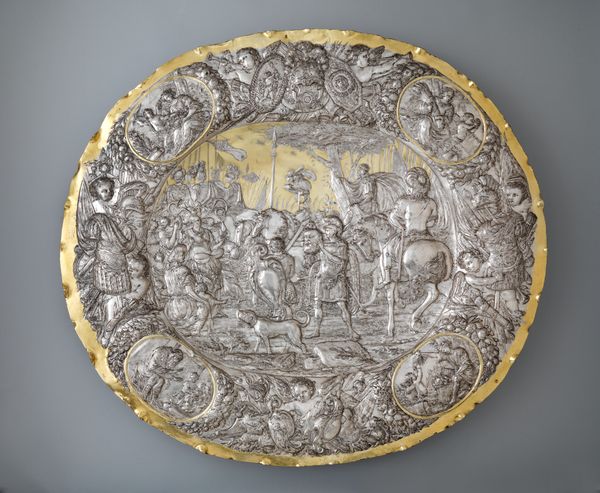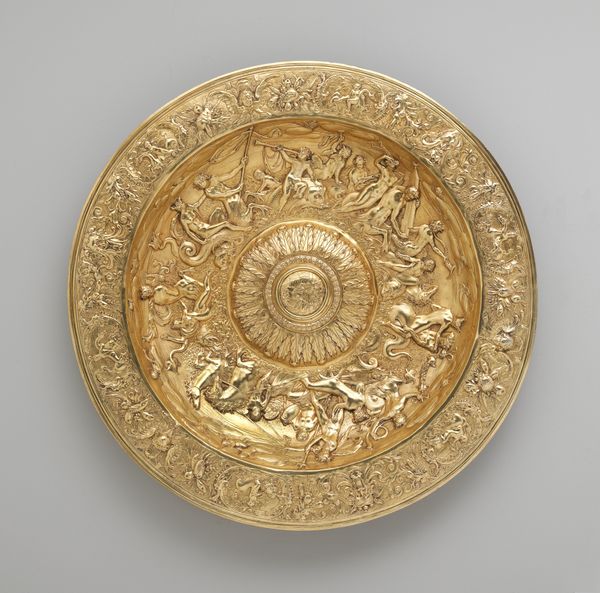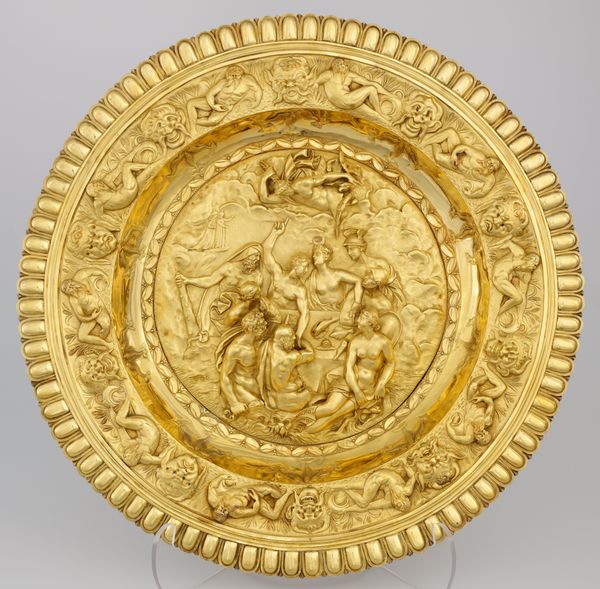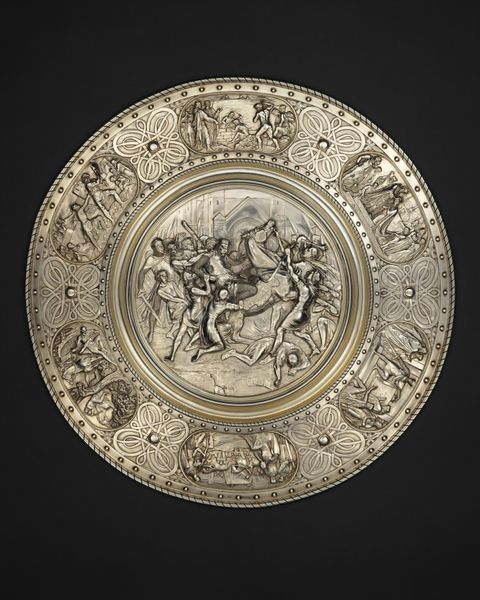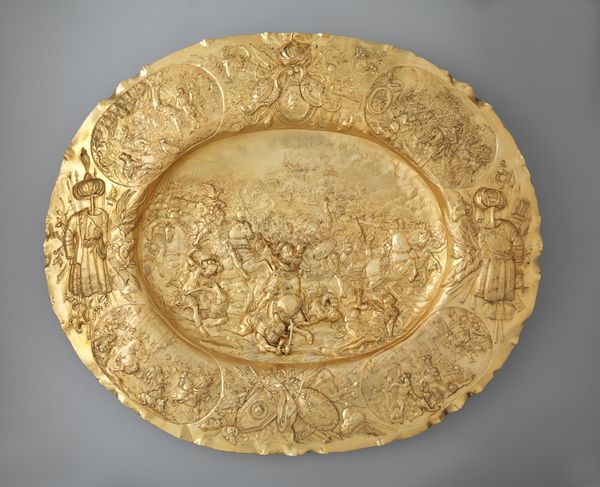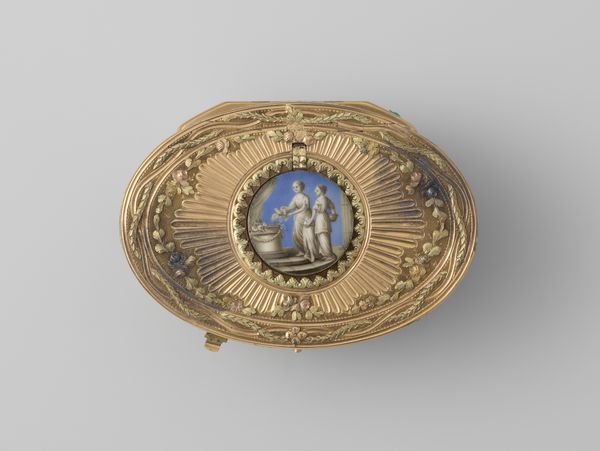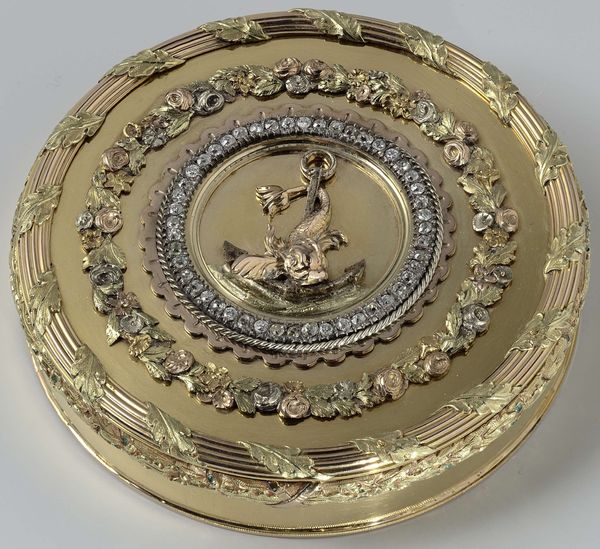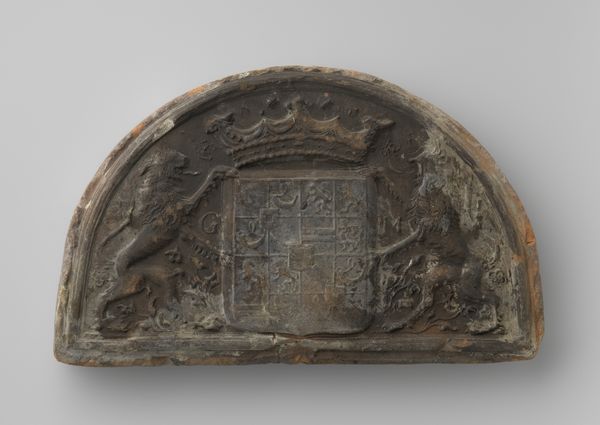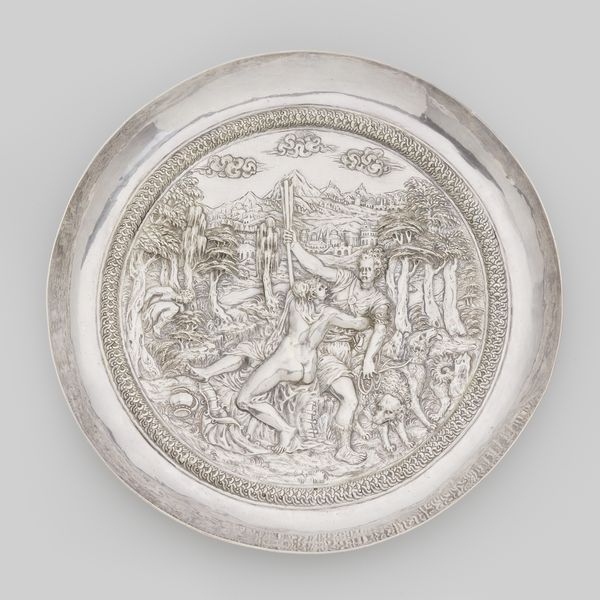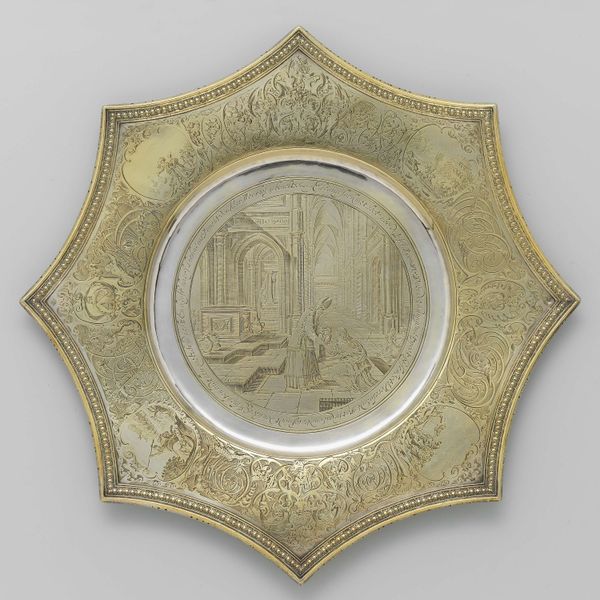
silver, metal, gold, relief, sculpture, engraving
#
silver
#
baroque
#
metal
#
gold
#
relief
#
sculpture
#
history-painting
#
engraving
Dimensions: height 7.5 cm, width 69.5 cm, depth 62.5 cm
Copyright: Rijks Museum: Open Domain
Editor: We're looking at an oval silver bowl, partially gilded, dating back to between 1675 and 1700. It's quite ornate, with what looks like an interior scene and portrait medallions around the rim. What strikes me is its grandeur, almost like a miniature historical stage set. How do you interpret this work? Curator: I see it as a powerful articulation of authority and memory. The material itself, silver and gold, speaks to wealth and status. The historical scene, coupled with the portraits, likely depicts an important political or intellectual lineage. This bowl wasn’t simply decorative; it was a statement. Editor: A statement of what, exactly? Are these Roman emperors, perhaps? Curator: Possibly. And that's precisely where the activist reading comes in. Who is being memorialized, and whose stories are being erased? Consider the power dynamics inherent in depicting specific historical figures, particularly men, while excluding others. It upholds certain values and reinforces a patriarchal narrative. The opulence becomes a form of cultural gatekeeping. Editor: So, the bowl isn’t just beautiful; it’s actively participating in a historical conversation? Curator: Absolutely. And that conversation extends to its contemporary reception. How do we, as modern viewers, engage with objects that celebrate potentially problematic histories? Do we critique, contextualize, or simply appreciate the craftsmanship? Editor: I never thought about a bowl having a political viewpoint! Curator: Precisely! Art isn't created in a vacuum. By examining the social context and the power structures at play, we can unlock richer understandings. Editor: That gives me a lot to think about, especially in how we present history in museums. Thanks!
Comments
No comments
Be the first to comment and join the conversation on the ultimate creative platform.

